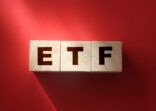The data is from the China Central Depository & Clearing (CCDC), the largest of the three onshore bond settlement platforms.
RMB 76.7bn of net inflow into treasuries was also seen in September, the highest monthly increase since the CCDC data became available in 2014.
Foreign investors already account for 5% of onshore China sovereign debt, a report from Axa Investment Management said.
HSBC Global Asset Management said in a report that the strong foreign inflow was “a result of the RMB’s special drawing rights (SDR) inclusion and opening up of the China Interbank Bond Market (CIBM)”.
| Foreign holdings (RMB bn) | Government bonds | MoM change | Overall bonds |
| October | 398 | +3.1% | N/A* |
| September | 386 | +11.9% | 806 |
| August | 345 | +7.2% | 774 |
Source: PBoC, CCDC
*October figure is yet to be released by PBoC
Likewise, Z-Ben Advisors, a China consultant, believed the influx was “likely from global central banks beginning the transition to RMB-denominated holdings” after the currency entered the SDR basket early October.
It noted the tax clarity announced by China in October will lead to “both clarity from regulators and solutions implemented by service providers [and it] should make the market more approachable for global managers”.
Yuan bond preference
The onshore bond market is sized at $9.2 trn, while foreign holdings reached RMB 806bn, or 1.3% of total as of September, data from People’s Bank of China showed.
Z-Ben forecasts foreign investment to top 7-8% of the RMB credit market over the next five years.
A separate Standard Chartered survey found that the HNWIs in Hong Kong prefer yuan bonds to other investments.
It polled 521 respondents in September and October, in which 126 are within the affluent category – defined as those with liquid asset of HK$1m or above or monthly personal income of a least HK$80,000.
Twenty percent of the affluent respondents said they invest in RMB bonds compared to 12% in equities and 11% in funds. Still, nearly three-quarters of them hold RMB deposits.
In general, RMB-related assets held by Hong Kong investors accounted for roughly 11% of their total assets, down by 2 percentage points from a year earlier, the survey noted. Among the affluent group, the ratio was down by 14 percentage points.
Will Leung, StanChart wealth management head of investment strategy, said investors might opt for bonds instead of deposits depending on the yield difference. The bank projects the yuan to turn more stable in the coming year.
Bank of Singapore expected yuan depreciation should be orderly and gradual – but another 6.5% weakening is expected in the next 12 months.
China’s 10-year sovereign debt yields 2.73 percent.
















